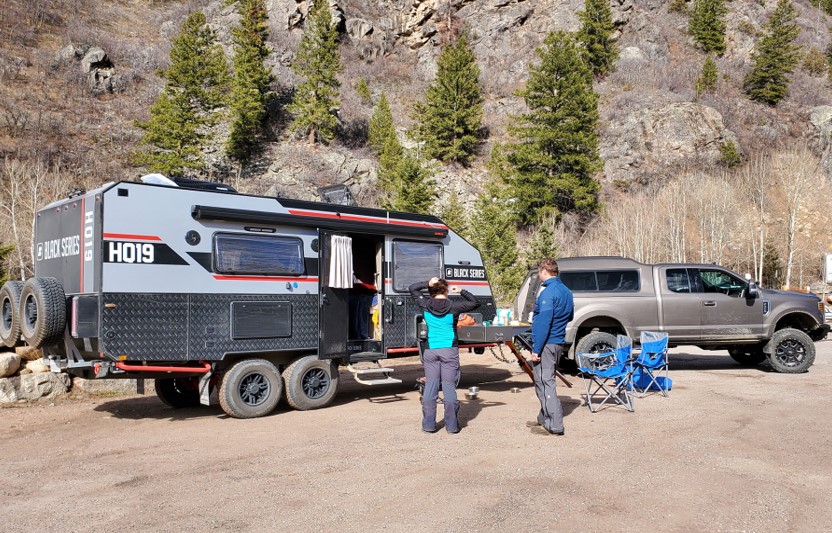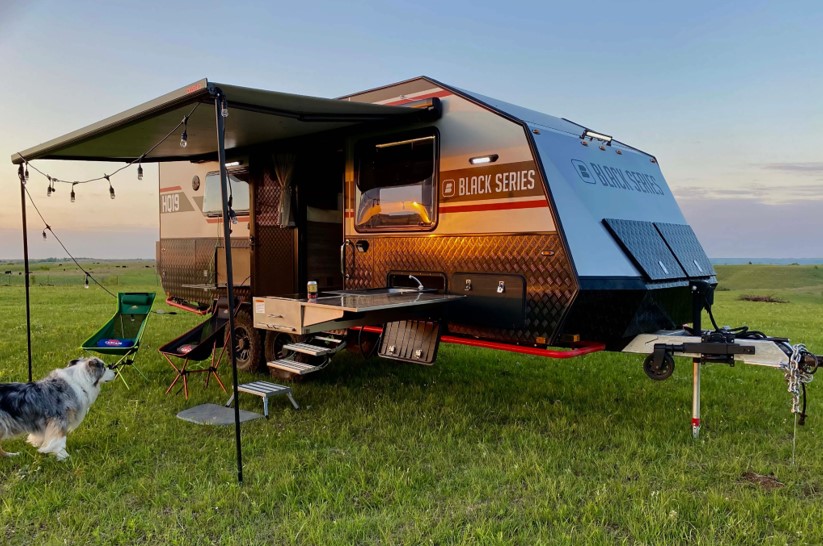7 Compelling Reasons For Living In An RV
BY Ankita Nov 12, 2023
The appeal of life on the open road has captured people's imaginations for generations. While the classic road trip experience usually involves traveling by car, an increasing number of adventurous souls are answering the call of wanderlust by living full-time in RVs. Recreational vehicles offer nomadic travelers a unique way to experience new places while enjoying all the comforts of home on wheels. Here Are Seven Prime Reasons For Living In An RV Here are a few reasons more adventurers are picking up stakes to explore the countryside and beyond from the driver's seat of an RV. 1. Unconstrained Exploration An RV removes the barriers that often limit vacation travel by time or budget. Living on the road full-time lets you follow your curiosity wherever it may lead without the constraints of return flights, hotel reservations, or tightly scheduled itineraries. An RV provides the freedom to meander as inspiration strikes, soaking in hidden gems off the beaten path. Why visit just the highlights when you can immerse yourself in the character of entire regions? The mobility of an RV empowers explorers to fully embrace the serendipity of the open road. 2. Low Cost of Living While purchasing an RV itself is an investment, the overall cost of living in an RV on a day-to-day basis is significantly lower than maintaining a traditional house. There is no mortgage, property taxes, or costly home repairs and renovations to worry about. Utility bills like water, electricity, heating, and WiFi tend to be lower given the smaller space of an RV. Some RVs even have solar panels or generators to reduce reliance on utilities. Having no yard to maintain and fewer belongings also means less spending on home and garden supplies. Generally, the overall monthly costs of living in an RV are a small fraction compared to being tied down to a house, condo, or apartment, allowing you to live very affordably while pursuing your passion for travel. 3. Downsizing And Minimalism Living in an RV encourages and enables a downsized, minimalist lifestyle. With limited storage space, RV dwellers must prioritize only keeping their most essential belongings. This can have therapeutic benefits like reduced clutter and stress. It also forces you to re-evaluate material possessions and spend less time and money acquiring unnecessary "stuff". With less to maintain both physically and financially, residents can focus more on relationships, experiences, and personal growth versus possessions. Many embrace RV living partially for the minimalist simplicity it brings, freeing up more time and money for what matters in life rather than things. While surely not for everyone, weighing these advantages makes a persuasive case that RVs could function as effective modern Land Ark providing comfortable roaming residences for their residents. 4. Connection To Nature Living in an RV allows for regular immersion and connection to nature. Whether boondocking in national forests, hiking straight from the campsite, or enjoying scenic ocean or mountain vistas daily, the outdoor-centric lifestyle of an RV provides a natural way to appreciate and experience nature. Residents are essentially traveling through various natural environments rather than being isolated in houses separated from the natural world. This can have psychological benefits from reducing stress and anxiety. It also fosters environmental appreciation and stewardship, with RV enthusiasts serving as frequent visitors, volunteers, and financial supporters of public lands. Regular exposure to nature's restorative powers is a compelling perk for many who choose the RV lifestyle. 5. Flexibility For Remote Work With the rise of remote and location-independent work, living in an RV has become a practical option for many digital nomads and remote professionals. Working from an RV allows you to easily shift locations as your job, projects or heart may take you. From coworking spaces to scenic outdoor spots with strong WiFi connections, digital work is now fully compatible with life on the road. The flexibility to pick up and work from new destinations using an RV office is a huge advantage. No longer being tied to one geographic area expands career possibilities for remote professionals seeking a flexible lifestyle. When combined with a distributed or remote team, living and working from an RV becomes an attainable dream for many. 6. Community And Sense Of Belonging Despite the freedom of being untethered, living in an RV does not have to mean isolation. RV communities provide welcoming atmospheres for residents of all ages and backgrounds. Whether staying in organized campgrounds or communities centered around hobbies and interests, RV dwellers regularly interact and form bonds over shared recreational passions and travel adventures. Places like state and national parks become regular "home bases" full of familiar friendly faces. RV rallies and events foster a deep sense of camaraderie among residents of the road. Online RV forums and groups also help combat potential loneliness through digital companionship. While independence is part of the appeal, community remains an important factor for the mental and social well-being of many full-time RV dwellers. 7. Repurposing And Upcycling For some, living in an RV is partially motivated by sustainable ideals around reusing existing vehicles and materials. Upcycling pre-owned RVs keeps them on the road longer versus ending up in landfills. Older RVs can also come at much lower costs than new models. Modern amenities can still be incorporated through solar panels, portable power stations, and WiFi equipment. Interior upgrades allow RVs of any age to be repurposed for comfortable full-time use. Creative refits help extend the functional lifespan of RVs in an environmentally-minded way. The embrace of more sustainable, eco-friendly features provides RV living with an appealing ethical dimension as well. Many dwellers find fulfillment in repurposing vehicles and gear to simplify techniques while living lightly on the land. Read Also: Exploring West London: The Appeal Of Serviced Apartments Alsi Resort – Overview, Reviews, Pros, And Cons What Are The Benefits Of Living In A Luxury Villa













